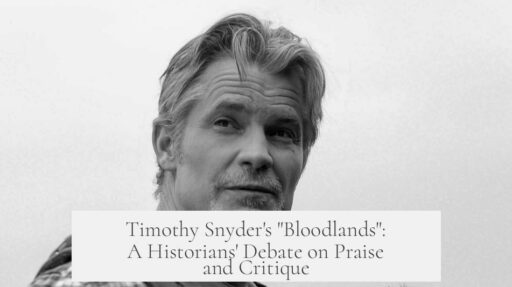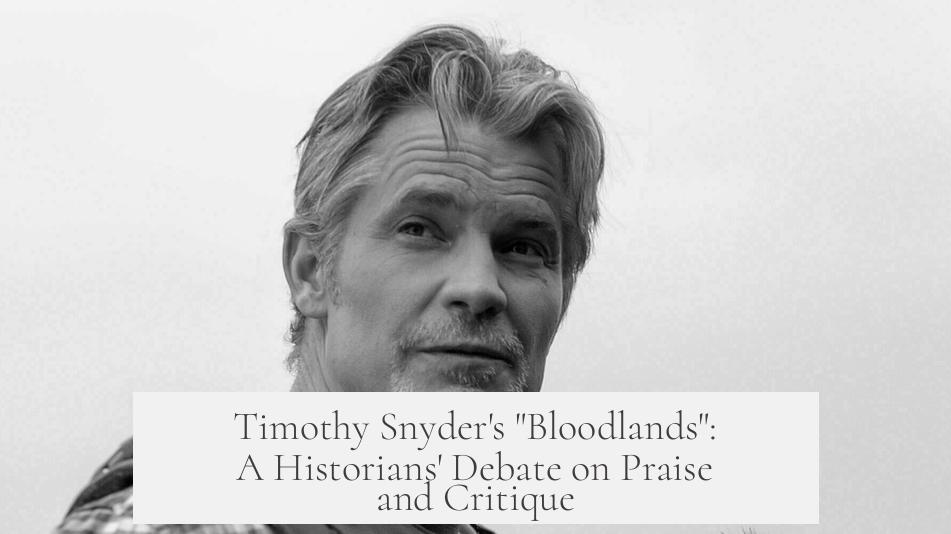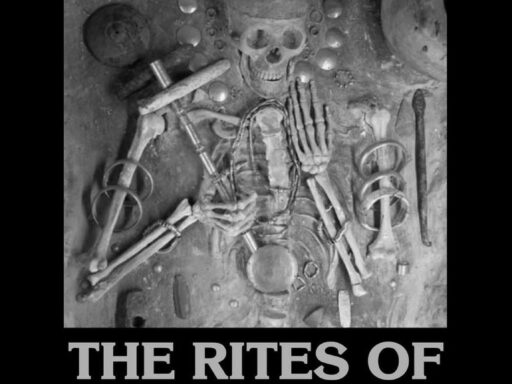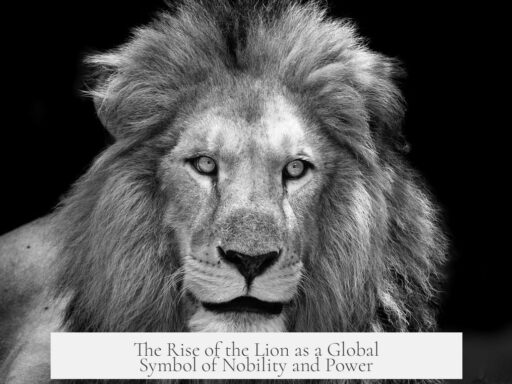Timothy Snyder’s “Bloodlands” receives mixed reactions from historians, blending public acclaim with deep scholarly criticism. Widely praised by the general audience and some historians like Anne Applebaum, the book stimulates debate about its historical methods and interpretations. Despite its broad impact, many experts contest its accuracy, presentation, and underlying arguments.

Among the critiques is a spotlight on numerous factual errors. Snyder’s claims, such as the start date of large-scale ‘aryanization’ in 1938 or the timing of the Operation Reinhard camps’ closure, contradict established historical records. Critics note mistakes including misattributing the Reichstag’s dissolution to Hitler instead of Hindenburg and confusing concentration camp designations. While isolated errors occur in historical works, the volume in “Bloodlands” suggests insufficient historiographical rigor.
The book also relies heavily on existing scholarship without contributing new evidence or groundbreaking arguments. Snyder synthesizes major studies on topics like Soviet POWs, Ukrainian famine, and the Holocaust, drawing from well-known scholars such as Christian Streit and Peter Longerich. His efforts emphasize the Eastern European civilians’ massive suffering, which appears novel to general readers but is familiar to specialists. The concept of “bloodlands,” however, lacks historical legitimacy, as none of the period’s actors identified these geographic or political boundaries, and the term excludes many victims from various areas.
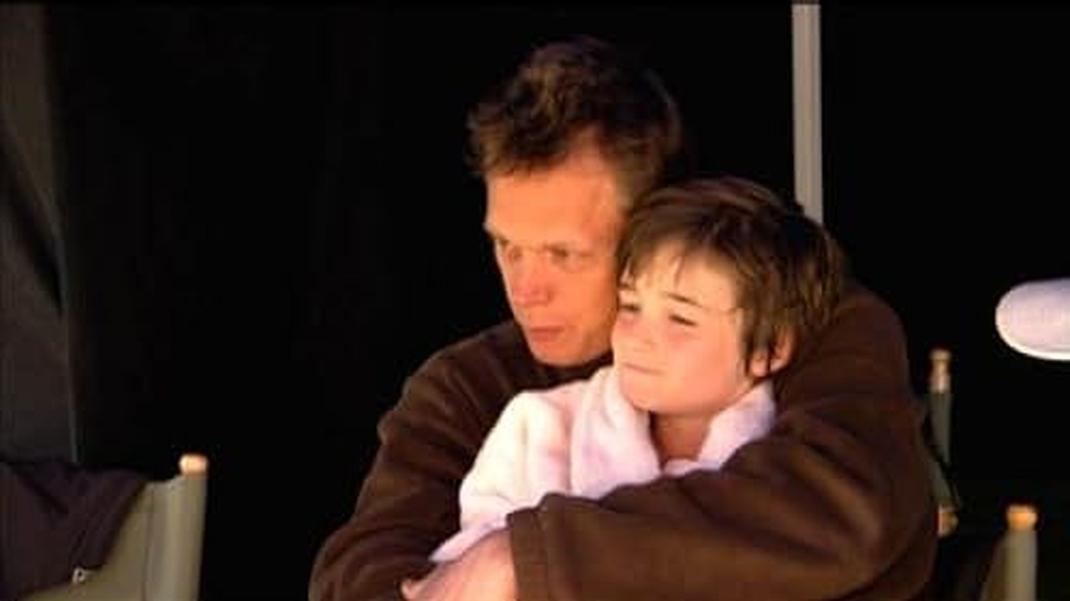
Historians criticize Snyder’s juxtaposition of events without substantiating connections. Presenting the Ukrainian famines side by side with Hitler’s policies suggests a link that lacks evidentiary support. Similarly, comparing the Warsaw Ghetto Uprising with the Warsaw Uprising without contextualizing local agency oversimplifies distinct historical moments and ignores crucial actors.
A significant controversy surrounds Snyder’s portrayal of Stalinist policies. He argues Stalin pursued racially motivated campaigns akin to Nazi racial ideology, highlighting the suffering of Ukrainians, Balts, and Belarusians. This view downplays or ignores the broader victimization of ethnic Russians during purges, the Gulags, and forced labor. Scholar Richard Evans stresses that Snyder’s focus on certain groups sidelines the fate of millions of Russians who also suffered under Stalin’s regime.
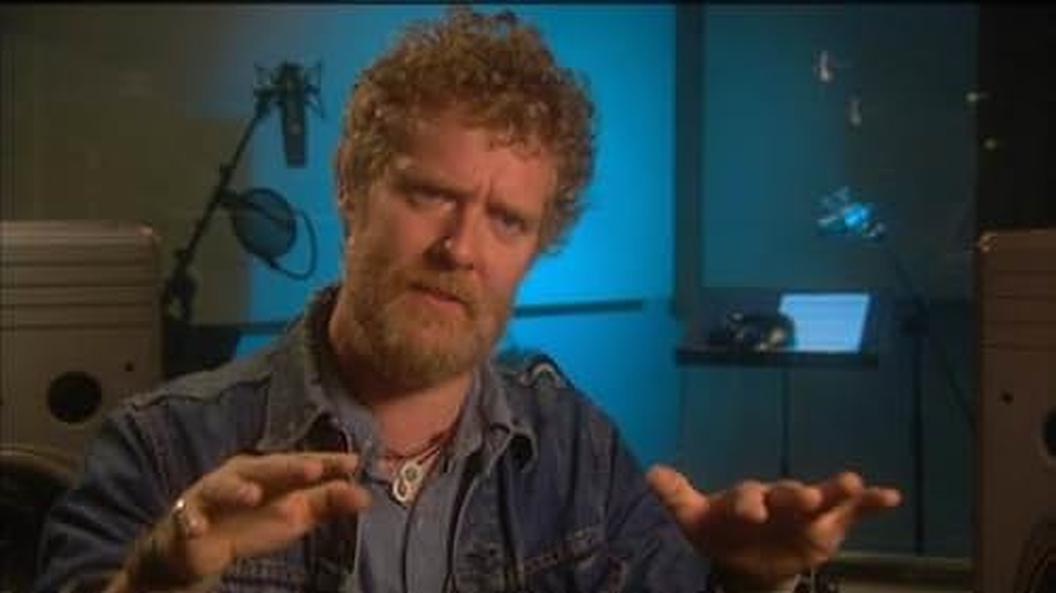
Another point of contention is the book’s oversimplification of local dynamics, particularly regarding collaboration and anti-Semitism. Snyder portrays civilians almost exclusively as victims of brutal regimes. This narrative overlooks local complicity, such as Polish participation in the Jedwabne pogrom and Baltic collaboration with Nazis. His discussion of Soviet partisans similarly reduces complex resistance movements to mere Stalinist tools, disregarding their actual role and motivations during wartime.
The book’s intense focus on the “Bloodlands” region leads to selective omissions. For example, it lacks information about how Nazi policies affected Jews in Western Europe, victims in the Balkans, and the persecutory actions of collaborationist regimes like Romania’s anti-Semitic campaigns. These gaps limit the comprehensiveness of Snyder’s historical landscape.

Moreover, Snyder’s framework attributes most wartime violence to the leaders Stalin and Hitler, marginalizing discussions about local perpetrators, agency, and the subtle interplay of regional factors. This perspective aligns with a “Great Men of Violence” interpretation, which recent scholarship finds reductive.
Critics also note that Snyder revives a classic totalitarianism theory, reducing intricate historical realities into a binary moral framework. This narrative approach, lacking sufficient evidence and relying on rhetorical techniques like close event juxtaposition, oversimplifies history’s complexity.

Snyder’s prose receives negative attention for its monotonous, repetitive style. According to Richard Evans, the frequent use of short sentences and recurring phrases impedes critical engagement, focusing reader attention on evoking emotional response rather than analytical thought.
Summarizing, “Bloodlands” succeeds in bringing broad awareness to Eastern Europe’s tragic history but falters in scholarly precision, originality, and nuance. The work provokes important discussions but should be read alongside critical analyses to fully understand its strengths and limitations.

- Lauded publicly but controversial among historians.
- Contains factual errors undermining historical accuracy.
- Relies on synthesis of existing scholarship without new evidence.
- Implicates connections between events without solid proof.
- Portrays Stalin’s policies as racially motivated controversially.
- Neglects local collaboration and anti-Semitism in the region.
- Omits wider victim groups and regional complexities.
- Uses a simplistic “Great Men” theory ignoring agency.
- Employs repetitive prose that discourages critical reading.
How is Timothy Snyder’s “Bloodlands” Viewed by Historians? A Deep Dive into Praise and Critique
Timothy Snyder’s “Bloodlands” walks a fine line between acclaim and controversy in historical circles. The book dramatically focuses on the mass murders that occurred in the areas between Nazi Germany and the Soviet Union before and during World War II. To many, it is a gripping narrative shedding light on often-overlooked tragedies. To others, it raises red flags about historiographical rigor. So, how exactly do historians view “Bloodlands”? Let’s unpack this complex reception and provide a balanced perspective.
First, the good news: publicly and in many press circles, Bloodlands was a hit. It sold well, attracted significant media attention, and earned accolades from some respected voices. Historian Anne Applebaum praised it for bringing to light the scale of suffering in Eastern Europe.
Yet, beneath the surface, historians present a mixed, often critical, consensus.
A Tale of Two Audiences: Popular Success Meets Scholarly Debate
On one hand, Bloodlands successfully delivers an accessible narrative to a large audience. Readers are struck by the vast death tolls and the brutal regimes that shaped this “bloodlands” region. Snyder’s framing grabs attention and appears fresh to many outside academia.
But on the other hand, serious historians approach the book with skepticism. The historian who specializes in the Holocaust and Nazi Germany expresses strong disapproval, highlighting several inaccuracies and methodological flaws. Why such polarized views? Let’s dig deeper.
Spotting the Errors: When Details Matter in History
One major sticking point is accuracy. Historians have found numerous factual errors that shouldn’t pass muster in serious scholarship. For example, Snyder claims that large-scale “Aryanization” began only in 1938, but it was happening as early as 1933 in Germany. This error distorts a key timeline of Nazi policies.
Other mistakes include mistaking who dissolved the Reichstag (it was Hindenburg, not Hitler), and wrongly stating the closure date of the Operation Reinhard camps (they ended in 1943, not 1944). Such errors might seem minor but reflect a concerning lack of sound historiography.
These slip-ups suggest the book sometimes trades precision for dramatic impact. As one historian puts it, the sheer number of such errors hints that Snyder’s depth of specialized knowledge in Nazi Germany is less robust than he implies.
Is “Bloodlands” a Radical New View? Not Quite.
Another frequent critique is that Bloodlands doesn’t present new evidence or groundbreaking arguments. Instead, Snyder synthesizes existing scholarship from authorities like Christian Streit, Nicolas Werth, and Peter Longerich.
This kind of synthesis is valuable for broad audiences but disappoints historians seeking fresh research or interpretations. The term “bloodlands” itself, while evocative, has no firm historical basis. None of the key actors at the time identified with that label.
Plus, Snyder’s habit of citing large, precise death tolls rubs some scholars the wrong way. Figures for victims in that era are notoriously unreliable and controversial. Quoting them to the last digit can come across as overconfident.
The Problem with Juxtaposition: Implied Arguments without Evidence
Snyder’s narrative captures many horrific events in chronological proximity. Yet, by placing tragedies side by side—such as Ukrainian famines alongside Hitler’s early policies or the Warsaw Ghetto Uprising alongside the Warsaw Uprising—he sometimes implies connections that don’t hold up under scrutiny.
Historians criticize this approach because Snyder stops short of providing concrete evidence for these implied links. This leaves readers guessing whether the author is suggesting causation or just coincidence, without clarity.
Controversial Takes on Stalin’s Policies and Victims
One of the more contentious elements concerns Snyder’s portrayal of Stalinist policies. He implies, without strong evidence, that Stalin’s regime was driven by racial motives similar to the Nazis. As part of this argument, Snyder heavily emphasizes Ukrainian, Baltic, and Belarusian victims.
This framing draws criticism for ignoring the majority of victims under Stalin who were ethnic Russians. For example, many ethnic Kazakhs and Nomads also suffered horrendous famine losses, and Russians formed the bulk of forced laborers in the USSR. This selective focus distorts the full scope of Stalinist brutality.
Historian Richard Evans explicitly points out that Snyder’s spotlight on certain groups sidelines the tragic fate of millions of Russians under Stalin.
Local Complexities: Collaboration and Agency Get Overlooked
By portraying the civilian populations primarily as passive victims of two brutal regimes, Snyder misses crucial local dynamics. The complex realities of collaboration, anti-Semitism, and motivations are glossed over.
For instance, Polish involvement in the anti-Semitic Jedwabne pogrom in 1941 is omitted. The role of Baltic collaborators working with Nazis and topics like the Trawniki men—a controversial group of local collaborators—is also ignored.
Even Soviet partisans get a one-dimensional portrayal. Instead of depicting them as resistance fighters, Snyder frames them simplistically as extensions of Stalinist brutality parallel to Nazi forces. This overlooks the complicated, multifaceted nature of partisan warfare.
What’s Missing? The Bigger Picture Beyond the Bloodlands
Besides these local issues, Snyder is criticized for ignoring crucial parts of Nazi policies outside the bloodlands. Victims in Western Europe, the Balkans, and areas under Romanian control receive little attention. For example, Romania’s own anti-Semitic campaigns and atrocities during the war are not covered.
This selective lens narrows rather than deepens the historical understanding of the period’s horrors.
Simplifying Historical Violence: The “Great Men of Violence” View
Another critique comes from historians like Thomas Kühne, who accuse Snyder of oversimplifying the causes of violence by attributing it mainly to Hitler and Stalin. This perspective sidelines nuanced academic debates about the agency of local actors, perpetrators, and broader societal dynamics.
By focusing on two central figures, Snyder’s history risks falling into a “Great Men of Violence” theory, ignoring the complex web of individual and collective choices that also shaped events.
Recycling Old Theories with a Fresh Coat of Paint
Critics say Bloodlands retreads the familiar totalitarianism theory with minimal innovation. By reducing complex histories into a dichotomy of two monstrous regimes, the book simplifies too much and relies on rhetorical tools rather than substantive new evidence.
This is described as a “warmed-up” narrative, which may be accessible but doesn’t advance academic debate.
The Writing Style: A Double-Edged Sword
While Snyder’s prose is punchy and accessible, some historians find it monotonous and overly simplistic. Richard Evans compares the barrage of short sentences to repeated blows from a cudgel, which may numb readers rather than provoke deep thought.
The repetitive phrasing seems designed more to evoke emotional response than critical analysis. Readers might end up feeling the pain without fully understanding the complexities behind it.
So, How Should Readers Approach “Bloodlands”?
Given all this, what does this mean for readers curious about “Bloodlands”? Its success shows it resonates powerfully with many. It illuminates a tragically violent region overlooked by much history.
However, readers should keep in mind the critiques:
- The book contains factual errors that signal lapses in specialized knowledge.
- It mostly synthesizes existing research without adding new evidence.
- Key complexities like local collaboration, victims outside the bloodlands, and nuanced agency receive limited attention.
- The writing style favors emotional impact over analytical depth.
These points suggest Bloodlands is best seen as a starting point—a vivid overview rather than a definitive scholarly authority.
Where Does “Bloodlands” Fit in the Broader Historical Conversation?
Its greatest contribution may be raising awareness of Eastern Europe’s tragic history to wider audiences. It sparks interest and conversation about topics sometimes sidelined in Western historiography.
But for those seeking deeper analysis, the critiques should encourage a more cautious and critical reading. Scholars recommend supplementing Bloodlands with specialized works on the Holocaust, Stalinism, local collaboration, and the varied experiences of victims.
For example, looking into Christian Gerlach’s research on “hunger politics” or Karel Berkhoff’s work on German-occupied Ukraine enriches understanding beyond Snyder’s framework.
Final Thoughts: A Provocative but Contested Contribution
Timothy Snyder’s “Bloodlands” impresses with its narrative scope and public impact, yet stands controversial among historians due to factual slips, oversimplifications, and selective focus. It presents a visceral picture of mass violence in Eastern Europe but does so with a mix of strengths and significant limitations.
For readers, the lesson here is twofold: appreciate the scope and emotional power but remain mindful of scholarly critiques. History like this demands both heart and critical mind.
What do YOU think? Should historical works prioritize broad narratives and emotional impact, or rigorous detail and nuance? Where do you draw the line?
One thing is certain: Bloodlands has firmly secured its place in the conversation about one of the darkest chapters of the 20th century.
1. How do historians view the factual accuracy of “Bloodlands”?
Historians have identified numerous errors in the book, such as incorrect dates and misattributions. These mistakes suggest issues with Snyder’s historiographical rigor.
2. Does “Bloodlands” offer new evidence or arguments in Holocaust and Soviet history?
The book mainly synthesizes existing research from established scholars. It does not introduce significant new evidence or original interpretations.
3. What criticisms exist regarding Snyder’s comparison of Nazi and Stalinist policies?
Some historians argue Snyder wrongly implies Stalin’s policies were racially motivated like the Nazis’. It overlooks many Russian victims and lacks sufficient proof for this claim.
4. How do historians assess Snyder’s treatment of local populations and collaboration?
Snyder has been criticized for ignoring local collaboration and anti-Semitism. He tends to portray all civilians as victims, missing complex local dynamics.
5. Why is Snyder’s juxtaposition of historical events seen as problematic?
By placing events side by side, Snyder implies connections without evidence. For example, linking the Ukrainian famines to Hitler’s policies or equating different uprisings lacks historical support.
